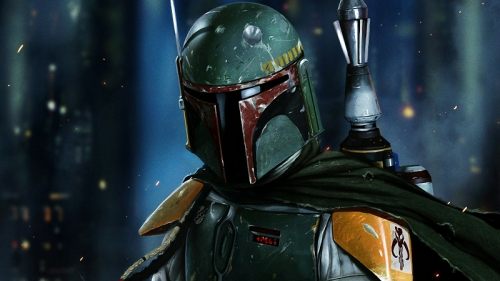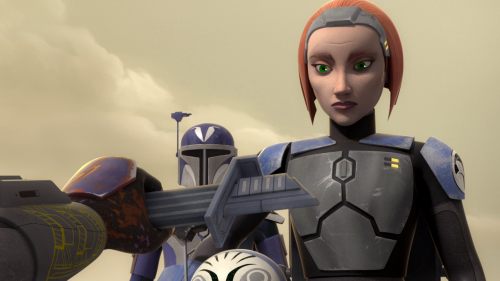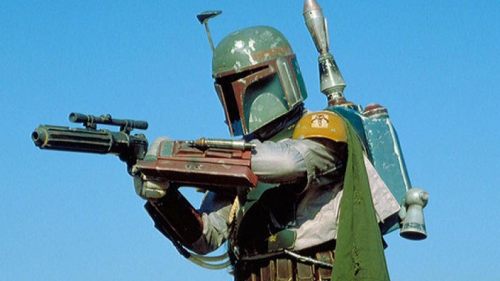SOLO: A STAR WARS STORY Is A Good Movie In Search Of A Movie Star
Alden Ehrenreich is not a bad actor. Let’s get that out of the way now. There’s a steely distance that he can project on camera that’s effective. He seems to be squinting even when he’s not. That’s part of why he was so appealing as dopey movie cowboy Hobie Doyle in the Coen Brothers’ Hail, Caesar. The squint, the square jaw, and the flat intonation were perfect for both the silver screen hero and the doofus who played him. The problem is that those qualities weren’t right for the character he’s required to play in Solo: A Star Wars Story.
Han Solo might not be the smartest man in the galaxy, but he thinks he is. It’s that supreme confidence that allows him to succeed beyond his wildest dreams in the original Star Wars trilogy. He beats the Empire. He gets the girl. He becomes a respectable hero instead of a greasy scoundrel. The loner now has a place in the world. Solo, written by the father-and-son team of Lawrence and Jonathan Kasdan, decides to tell audiences the story of how Han got to be Solo—an ultimately decent, optimistic man’s transformation into a cynic. It’s a bit more fun to imagine Han always being a misanthrope when A New Hope begins. It makes his rescue of Luke during the Battle of Yavin IV that much more monumental. Still, it stands to reason that he couldn’t have been a bastard his whole life.
He’s not. As we meet him on Corellia, he’s been forced into a life of crime by an underworld slaver. He’s romantically linked with a fellow thief named Qi’Ra (Emilia Clarke) and together, they have plans to escape their dead end and make a new life out in the stars. One of them makes it off-world, the other doesn’t. You can guess which one. This Han is a dreamer and a sucker for love. His knack for talking his way out of trouble is still there, but used in service of an earnest attempt to better himself.
Ehrenreich is given a chance to shine in this early section, during a speeder chase sequences through the grimy streets of Corellia. It’s a standard modern action scene, peppered with quips and visual gags. Few of these jokes work, and most of it is due to Ehrenreich’s dry, flat delivery. There’s an undeniable richness and variety to Harrison Ford’s performance as Han Solo, much of it owed to whatever it is that makes Ford an iconic actor. He’s animated. He’s passionate. He’s nervous. There’s so much going on behind his good looks that you can’t shake him from your mind whenever he’s not on camera. He’s a movie star.
Do not ask me what makes a credible leading man or woman in the cinema. That’s a waste of everyone’s time. Quite frankly, no one (including directors, studio heads, casting directors, producers, writers, critics, publicists, etc.) knows the answer and to ask is pointless. It’s simply a feeling one has, an intangible that has outsized influence on whether or not a film works—like chemistry between romantic leads or if a joke lands or doesn’t. Movie stars are movie stars because they are movie stars. No matter how many films hire Garrett Hedlund as the lead, it’s hard to classify him as such, no matter how much you like Four Brothers.
In a way, Alden Ehrenreich is at a colossal disadvantage. He is not only playing an iconic character, he’s also playing one inexorably linked to one particular beloved actor. In a way, he’s got the same task that George Lazenby had in On Her Majesty’s Secret Service. You can’t quite mimic the last guy, lest it veer into parody. One can only imagine how bizarre it would have been if Disney succumbed to fan pressure and cast Ford impressionist Anthony Ingruber as Solo. Going a different direction means potentially upsetting purists. In the end, all that can be offered is bland compromise. As long as he holds his blaster properly, we’re fine.
As a whole, Solo can sometimes feel like its own bland compromise. Han is the good guy, even if part of his initial appeal came from how edgy he was. All the iconography of the character has to be established right away—his gun, his space dice, the Millennium Falcon, Chewie, Lando, etc. He even shoots first. But, chances are taken, too. This is an incredible looking film, thanks to the superb cinematography of Bradford Young and Neil Lamont’s production design.
Critics say this after every Star Wars film now, but there are sets, worlds, and ideas in Solo that we have never seen in this universe before. That’s not only a testament to the craftspeople behind the movie, but also to the elasticity of the world of Star Wars. By the time Han falls in with Tobias Beckett (Woody Harrelson) and his band of outlaws, we’ve seen industrial squalor, harrowing fascist iconography, the most gritty battle scene in Star Wars history, and an Old West-style train heist.
The centerpiece of the movie is a mid-story chase through a spatial anomaly straight out of Star Trek called the Maelstrom. It’s thrilling work from Ron Howard and his editors and it keeps the awkward banter to a minimum. It’s so clearly inspired by the asteroid field chase in Empire Strikes Back that composer John Powell borrows the famous John Williams music cue from that sequence. The movie bounces from the familiar to the outrageous and back again with ease. Star Wars can be anything it wants to be.
What this movie can’t seem to do, though, is be consistently funny. The jokes are there on the page, but something is off with the delivery and the chemistry between the actors. It’s certainly worth noting that one of the rumors about why Christopher Miller and Phil Lord were fired from directing this movie is because they were leaning too far toward comedy. But could it have been that this cast simply wasn’t the right one to be slinging one-liners and doing improv, that it simply wasn’t ever going to be funny no matter how hard they tried? There’s an entire CGI pilot character voiced by Jon Favreau that’s supposed to be comic relief that didn’t elicit a single real laugh from most of the theater I saw this movie in. Ehrenreich doesn’t have the range or the natural charisma needed to carry this film, to get those laughs, and to then pivot back to high drama.
Emilia Clarke is nearly lifeless in a role that offered her plenty of nuance and color. Only Donald Glover as Lando and Phoebe Waller-Bridge as L3-37 are able to consistently hit their marks when given comedy or camp to play with. As the Kasdans envisioned this, Solo is an old school western in space. But Harrison Ford was not an old school movie star. He tempered his swagger with a nervous energy that was popular within the 70s and 80s New Hollywood paradigm that made Dustin Hoffman and Al Pacino box office titans. That template is now how the movie industry fashions all of their lead characters. The entire Marvel universe is populated by actors following Harrison Ford’s example—non-traditional lead actors full of bravado, buffoonery, and bluster. Performers like Chris Pine and Chris Pratt made their careers off of playing thinly veiled variations on Han Solo in their respective space franchises. If an actor literally playing Han Solo cannot measure up to the imitations, there’s a problem.
Solo should work. It’s a well-told story with a great director stepping in to wrangle a troubled production. It almost works, until it doesn’t. Whatever glimmer of eccentricity Ehrenreich had in Hail, Caeser is not there in Solo. It’s a mumbly, cold performance that needed an actor willing to take risks and not always look so heroic. Sometimes, it was more satisfying to see Harrison Ford take a punch than to land one. Ehrenreich never seems to get a scratch on him. Lucasfilm’s first attempt to build a Star Wars spinoff around a single character misses the mark because there’s an empty space where Han Solo is supposed to be.



